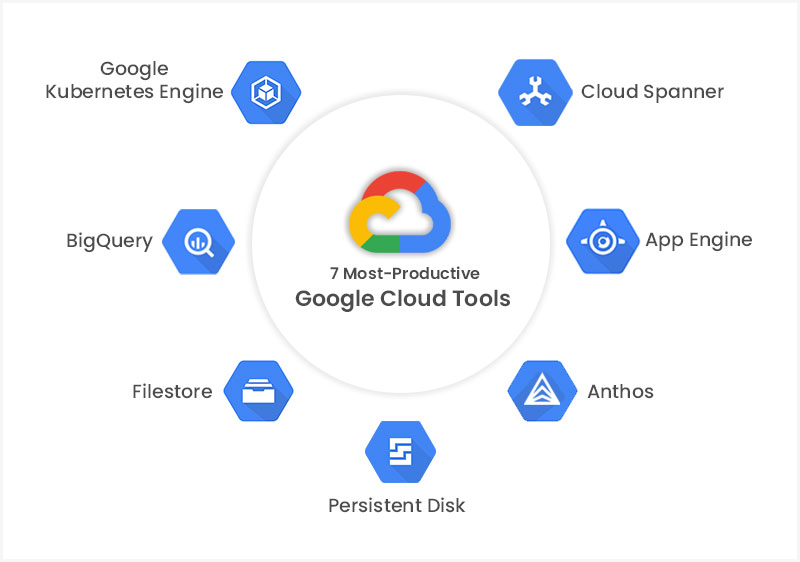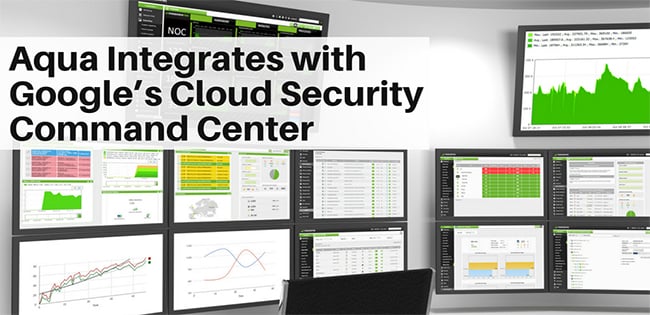The Google Cloud Management Tools Ecosystem
Google Cloud Management Tools are a comprehensive suite of products that provide organizations with the ability to manage their Google Cloud infrastructure more efficiently. These tools offer visibility, automation, and optimization capabilities, enabling businesses to manage their cloud resources at scale effectively. With the increasing adoption of cloud computing, organizations require robust and reliable tools to manage their cloud infrastructure, and Google Cloud Management Tools offer just that. Google Cloud Management Tools provide a unified interface for managing all Google Cloud services. These tools offer features such as resource management, usage monitoring, and troubleshooting, making it easier for organizations to manage their cloud infrastructure. By using these tools, organizations can optimize their cloud resources, reduce costs, and improve performance, leading to increased efficiency and productivity.
Google Cloud Management Tools offer several benefits, including centralized management, real-time monitoring, and automation. With centralized management, organizations can manage all their Google Cloud resources from a single interface, reducing the complexity of managing multiple services. Real-time monitoring enables organizations to identify and troubleshoot issues quickly, minimizing downtime and improving performance. Automation, on the other hand, enables organizations to deploy resources quickly and efficiently, reducing the time and effort required to manage their cloud infrastructure.
In this article, we will explore the different Google Cloud Management Tools and how they can help organizations maximize their cloud efficiency. We will discuss the features and benefits of each tool and provide examples of how they can be used to manage Google Cloud resources effectively.
Google Cloud Console: The Web-based Interface for Google Cloud
Google Cloud Console is a web-based interface that provides a unified view of all Google Cloud services. It is one of the primary Google Cloud Management Tools that enables users to manage their resources, monitor usage, and troubleshoot issues. With the Google Cloud Console, organizations can manage their cloud infrastructure efficiently, reducing the complexity and time required to manage their cloud resources. The Google Cloud Console offers several features and benefits, including a user-friendly interface, customizable dashboards, and role-based access control. The user-friendly interface enables users to navigate the platform easily, while customizable dashboards allow users to monitor their cloud resources and performance in real-time. Role-based access control ensures that only authorized users have access to specific resources, improving security and reducing the risk of unauthorized access.
The Google Cloud Console also provides several tools for managing Google Cloud resources, including Compute Engine, Google Kubernetes Engine, and Cloud Storage. With Compute Engine, organizations can create and manage virtual machines (VMs) on Google Cloud. Google Kubernetes Engine enables organizations to deploy, manage, and scale containerized applications on Google Cloud. Cloud Storage provides durable and scalable object storage for data and backups.
The Google Cloud Console also offers monitoring and logging capabilities, enabling organizations to troubleshoot issues quickly and optimize their cloud infrastructure. With Cloud Monitoring, organizations can monitor the performance and health of their Google Cloud resources in real-time. Cloud Logging provides centralized logging for Google Cloud resources, enabling organizations to collect, analyze, and search log data from their cloud infrastructure.
In summary, the Google Cloud Console is a powerful Google Cloud Management Tool that provides a unified view of all Google Cloud services. With its user-friendly interface, customizable dashboards, and role-based access control, organizations can manage their cloud infrastructure efficiently. The Google Cloud Console also provides several tools for managing Google Cloud resources, including Compute Engine, Google Kubernetes Engine, and Cloud Storage. With its monitoring and logging capabilities, organizations can troubleshoot issues quickly and optimize their cloud infrastructure.
Google Cloud Monitoring: Real-time Insights into Cloud Performance
Google Cloud Monitoring is a powerful tool that provides real-time insights into the performance and health of Google Cloud resources. It is designed to help organizations monitor their cloud infrastructure, identify issues, and troubleshoot problems quickly. With Google Cloud Monitoring, organizations can maintain optimal cloud performance, improve availability, and enhance the user experience. Google Cloud Monitoring offers several features and benefits, including customizable dashboards, alerting and notification, and integrations with other Google Cloud services. Customizable dashboards enable users to create a unified view of their cloud infrastructure, providing real-time insights into performance and health. Alerting and notification features enable users to set up custom alerts and notifications based on specific performance metrics, ensuring that they are notified of issues before they become critical. Integrations with other Google Cloud services, such as Google Cloud Logging and Google Cloud Console, provide a seamless experience for managing and monitoring Google Cloud resources.
Google Cloud Monitoring supports a wide range of Google Cloud resources, including Compute Engine, Kubernetes Engine, Cloud Storage, and Cloud SQL. It provides detailed metrics and insights into the performance and health of these resources, enabling organizations to optimize their cloud infrastructure and identify areas for improvement. Google Cloud Monitoring also supports custom metrics, allowing organizations to monitor and track their own performance metrics.
Google Cloud Monitoring offers several advanced features, including uptime checks, trace ingestion, and debugging. Uptime checks enable users to monitor the availability of their web services and applications, ensuring that they are always available to users. Trace ingestion provides detailed insights into the performance of distributed applications, enabling organizations to identify and troubleshoot issues quickly. Debugging features enable users to diagnose and resolve issues in their cloud infrastructure, reducing downtime and improving performance.
In summary, Google Cloud Monitoring is a powerful tool that provides real-time insights into the performance and health of Google Cloud resources. With customizable dashboards, alerting and notification, and integrations with other Google Cloud services, organizations can maintain optimal cloud performance, improve availability, and enhance the user experience. By using Google Cloud Monitoring, organizations can optimize their cloud infrastructure, identify areas for improvement, and troubleshoot issues quickly, ensuring that their cloud infrastructure is always performing at its best.
Google Cloud Logging: Centralized Logging for Google Cloud
Google Cloud Logging is a crucial tool in the Google Cloud Management Tools suite, providing centralized logging for Google Cloud resources. It enables organizations to collect, analyze, and search log data from their cloud infrastructure, providing valuable insights and optimizing cloud infrastructure management.
Google Cloud Logging offers a wide range of features and benefits that make it an essential tool for managing cloud infrastructure. One of the primary benefits of Google Cloud Logging is its ability to collect log data from various Google Cloud services, such as Compute Engine, Cloud Storage, and Cloud Functions. By collecting log data in one central location, organizations can easily search, analyze, and monitor their cloud infrastructure, making it easier to identify and troubleshoot issues.
Google Cloud Logging also offers advanced search and filtering capabilities, enabling organizations to quickly find the log data they need. Users can filter log data based on various attributes, such as resource type, log name, and severity level, making it easier to identify specific issues or trends. Additionally, Google Cloud Logging offers customizable dashboards, allowing users to create visualizations of their log data, making it easier to understand and analyze.
Another significant benefit of Google Cloud Logging is its integration with other Google Cloud Management Tools. For example, Google Cloud Logging integrates with Google Cloud Monitoring, enabling organizations to correlate log data with performance metrics. This integration provides a more comprehensive view of cloud infrastructure performance and enables organizations to identify and troubleshoot issues more effectively.
Google Cloud Logging also offers various security features, such as access control and encryption, ensuring that log data is secure and protected. Organizations can control who has access to log data, ensuring that only authorized users can view or modify it. Additionally, Google Cloud Logging encrypts log data at rest and in transit, ensuring that it is protected from unauthorized access or theft.
In summary, Google Cloud Logging is a powerful tool in the Google Cloud Management Tools suite, providing centralized logging for Google Cloud resources. By collecting, analyzing, and searching log data, organizations can gain valuable insights into their cloud infrastructure, optimize their cloud infrastructure management, and troubleshoot issues more effectively. With its advanced search and filtering capabilities, integration with other Google Cloud Management Tools, and security features, Google Cloud Logging is an essential tool for managing cloud infrastructure.
Google Cloud Security Command Center: Securing Google Cloud Infrastructure
Google Cloud Security Command Center is a comprehensive security management and threat detection tool for Google Cloud resources. It enables organizations to monitor their cloud infrastructure for security threats, identify vulnerabilities, and take action to mitigate risks, providing an essential layer of security for Google Cloud infrastructure.
Google Cloud Security Command Center offers a wide range of features and benefits that make it an essential tool for securing cloud infrastructure. One of the primary benefits of Google Security Command Center is its ability to provide a centralized view of security across an entire Google Cloud infrastructure. By providing a unified view of security, organizations can quickly identify and address security threats, reducing the risk of a security breach.
Google Cloud Security Command Center also offers advanced threat detection capabilities, using machine learning and other advanced techniques to identify potential security threats. It can detect threats such as network anomalies, suspicious behavior, and unauthorized access, providing organizations with real-time insights into potential security threats.
Another significant benefit of Google Cloud Security Command Center is its integration with other Google Cloud Management Tools. For example, it integrates with Google Cloud Identity and Access Management (IAM), enabling organizations to manage access to their cloud infrastructure securely. It also integrates with Google Cloud Audit Logs, providing organizations with detailed logs of access and activity on their cloud infrastructure.
Google Cloud Security Command Center also offers various security recommendations and best practices, helping organizations to secure their cloud infrastructure effectively. These recommendations cover a wide range of topics, including network security, access control, and data encryption, providing organizations with a comprehensive guide to securing their cloud infrastructure.
In summary, Google Cloud Security Command Center is a powerful tool in the Google Cloud Management Tools suite, providing comprehensive security management and threat detection for Google Cloud resources. By providing a centralized view of security, advanced threat detection capabilities, and integration with other Google Cloud Management Tools, Google Cloud Security Command Center is an essential tool for securing cloud infrastructure. With its security recommendations and best practices, organizations can effectively secure their cloud infrastructure and mitigate security risks.
Google Cloud Deployment Manager: Automating Google Cloud Deployments
Google Cloud Deployment Manager is a powerful tool that enables organizations to automate the deployment and management of Google Cloud resources. It provides a way to define and manage infrastructure as code, enabling organizations to deploy resources quickly and efficiently, reducing the risk of errors and inconsistencies that can occur with manual deployments.
Google Cloud Deployment Manager supports a wide range of Google Cloud resources, including Compute Engine instances, Cloud Storage buckets, and Kubernetes clusters. It uses a declarative approach to infrastructure management, where users define the desired state of their infrastructure, and Google Cloud Deployment Manager ensures that the infrastructure is deployed and configured to match that state.
Google Cloud Deployment Manager supports the use of templates, which enable users to define reusable components of their infrastructure. Templates can be used to define common configurations, such as load balancers or databases, and can be shared across an organization, reducing duplication and increasing consistency.
Google Cloud Deployment Manager also supports configuration management tools such as Ansible, Chef, and Puppet, enabling organizations to use their preferred configuration management tool in conjunction with Google Cloud Deployment Manager. This flexibility allows organizations to leverage their existing expertise and tools, reducing the learning curve and increasing the speed of deployment.
Google Cloud Deployment Manager provides several benefits to organizations looking to automate their Google Cloud deployments. It reduces the risk of errors and inconsistencies that can occur with manual deployments, enabling organizations to deploy resources quickly and efficiently. It also provides version control and rollback capabilities, enabling organizations to manage their infrastructure as code and quickly recover from failures.
In summary, Google Cloud Deployment Manager is a powerful tool in the Google Cloud Management Tools suite, enabling organizations to automate the deployment and management of Google Cloud resources. By using Google Cloud Deployment Manager, organizations can define and manage infrastructure as code, reducing the risk of errors and inconsistencies and increasing the speed of deployment. With its support for templates and configuration management tools, Google Cloud Deployment Manager provides flexibility and enables organizations to leverage their existing expertise and tools.
Google Cloud Cost Management: Optimizing Cloud Spend
Google Cloud Cost Management is a powerful tool that enables organizations to optimize their cloud spend and manage their cloud infrastructure costs effectively. It provides visibility into cloud usage and costs, enabling organizations to identify areas where they can reduce costs and optimize their cloud infrastructure.
Google Cloud Cost Management offers several features and benefits that make it an essential tool for managing cloud spend. One of the primary benefits is its ability to provide detailed cost reporting and breakdowns, enabling organizations to understand their cloud costs and identify areas where they can reduce expenses.
Google Cloud Cost Management also offers budgeting and alerting capabilities, enabling organizations to set budgets for their cloud infrastructure and receive alerts when they exceed those budgets. This feature helps organizations stay on top of their cloud spend and avoid unexpected costs.
Another significant benefit of Google Cloud Cost Management is its support for cost optimization recommendations. It uses machine learning algorithms to analyze cloud usage patterns and identify opportunities for cost optimization, such as rightsizing underutilized resources or scheduling resources to turn off during off-hours.
Google Cloud Cost Management also supports tagging, which enables organizations to categorize and track costs by project, team, or application. Tagging provides a more granular view of cloud costs and enables organizations to allocate costs more accurately.
In summary, Google Cloud Cost Management is a powerful tool in the Google Cloud Management Tools suite, enabling organizations to optimize their cloud spend and manage their cloud infrastructure costs effectively. By providing detailed cost reporting, budgeting and alerting, cost optimization recommendations, and tagging support, Google Cloud Cost Management provides organizations with the visibility and tools they need to manage their cloud spend and optimize their cloud infrastructure.
Conclusion
Google Cloud Management Tools offer a powerful suite of products that enable organizations to manage their Google Cloud infrastructure more efficiently. These tools provide visibility, automation, and optimization capabilities to help businesses manage their cloud resources at scale, leading to increased efficiency, cost savings, and improved security.
Google Cloud Console provides a unified view of all Google Cloud services, enabling users to manage their resources, monitor usage, and troubleshoot issues quickly. Google Cloud Monitoring offers real-time insights into the performance and health of Google Cloud resources, helping organizations maintain optimal cloud performance.
Google Cloud Logging provides centralized logging for Google Cloud resources, enabling organizations to collect, analyze, and search log data from their cloud infrastructure. Google Cloud Security Command Center offers security management and threat detection for Google Cloud resources, helping organizations secure their cloud infrastructure.
Google Cloud Deployment Manager enables organizations to automate the deployment and management of Google Cloud resources, providing a way to define and manage infrastructure as code. Google Cloud Cost Management provides visibility into cloud usage and costs, enabling organizations to identify areas where they can reduce costs and optimize their cloud infrastructure.
By using these Google Cloud Management Tools, organizations can gain visibility into their cloud infrastructure, automate deployment and management, optimize performance and costs, and secure their cloud infrastructure. These tools are essential for businesses that want to maximize their cloud efficiency and achieve their cloud objectives.








